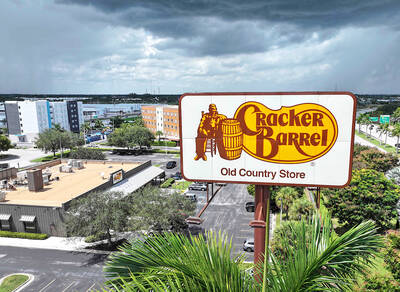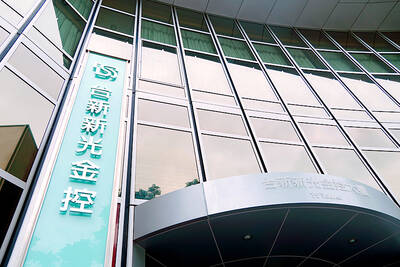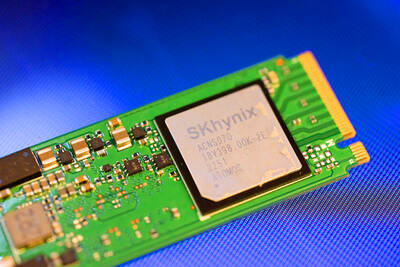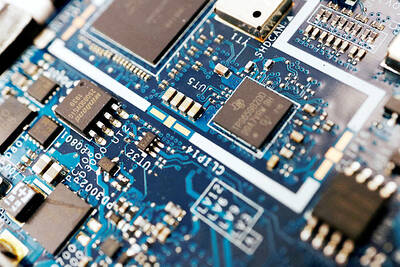In another measure to increase consumer spending, the Ministry of Finance has drawn up a bill seeking to provide a tax cut of NT$30,000 (US$895) for car purchases in the hope the cut will boost sales that withered 45 percent year-on-year last month to the lowest level in 30 years.
Minister of Finance Lee Sush-der (李述德) said he approved a tax cut draft that proposes lowering the commodity tax by NT$30,000 for one year to assist the car market.
The tax cut plan, which still needs approval from the legislature, would apply to domestic and imported cars, but would not be retroactive, the draft said.
The current tax rate stands at 25 percent for 2,000cc vehicles and 30 percent for cars with bigger exhaust capacity.
It is up to car dealers to decide whether to translate the tax reform into lower vehicle prices, the finance ministry officials said, adding the tax cut may not benefit first-time car buyers.
Potential beneficiaries must present a salvaged car title for their old vehicles to qualify for the tax cut, the draft said.
Finance ministry officials said the restriction is intended to prevent buyers from owning more than two cars in a bid to help control carbon emissions. It is hoped that the constraint would ease potential criticism that the tax cut would favor only the wealthy, they said.
The government has been floating the tax cut idea since last month. The delay in a decision had led many customers to cancel their orders, car dealers said.
Car factories were especially hit by the unprecedented loss of orders. In addition to cutting shifts and slashing output, some factories plan to cut staff, they said.
Ministry of Transportation and Communications (MOTC) data showed that the nation’s new car sales barely reached 13,000 units last month, the lowest level in 30 years.
Last month’s sales figures were 24.7 percent lower than October’s level and 44.6 percent less than a year ago, the government’s data showed. Declining sales spared no local car brands.
A Japanese car company official said that as long as the government remained undecided on the subsidies, sales during the Lunar New Year period — traditionally the peak car-buying season — would likely be worse than the so-called “ghost month” in August, when most locals believe it is an inauspicious time to buy cars.
In a bid to counter flagging sales, some car dealers were planning to copy the government’s shopping voucher plan, by providing a “refund voucher” to consumers who place or do not cancel an order. The vouchers could be used for refunds when the government’s subsidy program is implemented.
Chen Kuo-rong (陳國榮), chairman of the Taiwan Transportation Vehicle Manufacturers Association (TVMA, 車輛公會), said the automotive industry, which employs around 300,000 people, is very similar to the housing industry as many families and companies rely on the industry for their livelihood.
“The rescue package that we proposed was not leaving taxpayers to bear the burden, but rather encourages the public to replace their old cars with new models for the sake of the environment,” Chen said, adding that the government’s tax revenue would increase as a result.
Merrill Lynch automobile industry analyst Albert Hsu (徐志偉) said last week the government’s plan to lower the commodity tax would have little effect on demand.
Hsu said in a research note that the plan would help only those who can afford to buy a car and have already planned to do so. He maintained a negative view on Taiwan’s auto sector.

On Tuesday, US President Donald Trump weighed in on a pressing national issue: The rebranding of a restaurant chain. Last week, Cracker Barrel, a Tennessee company whose nationwide locations lean heavily on a cozy, old-timey aesthetic — “rocking chairs on the porch, a warm fire in the hearth, peg games on the table” — announced it was updating its logo. Uncle Herschel, the man who once appeared next to the letters with a barrel, was gone. It sparked ire on the right, with Donald Trump Jr leading a charge against the rebranding: “WTF is wrong with Cracker Barrel?!” Later, Trump Sr weighed

HEADWINDS: Upfront investment is unavoidable in the merger, but cost savings would materialize over time, TS Financial Holding Co president Welch Lin said TS Financial Holding Co (台新新光金控) said it would take about two years before the benefits of its merger with Shin Kong Financial Holding Co (新光金控) become evident, as the group prioritizes the consolidation of its major subsidiaries. “The group’s priority is to complete the consolidation of different subsidiaries,” Welch Lin (林維俊), president of the nation’s fourth-largest financial conglomerate by assets, told reporters during its first earnings briefing since the merger took effect on July 24. The asset management units are scheduled to merge in November, followed by life insurance in January next year and securities operations in April, Lin said. Banking integration,

LOOPHOLES: The move is to end a break that was aiding foreign producers without any similar benefit for US manufacturers, the US Department of Commerce said US President Donald Trump’s administration would make it harder for Samsung Electronics Co and SK Hynix Inc to ship critical equipment to their chipmaking operations in China, dealing a potential blow to the companies’ production in the world’s largest semiconductor market. The US Department of Commerce in a notice published on Friday said that it was revoking waivers for Samsung and SK Hynix to use US technologies in their Chinese operations. The companies had been operating in China under regulations that allow them to import chipmaking equipment without applying for a new license each time. The move would revise what is known

Artificial intelligence (AI) chip designer Cambricon Technologies Corp (寒武紀科技) plunged almost 9 percent after warning investors about a doubling in its share price over just a month, a record gain that helped fuel a US$1 trillion Chinese market rally. Cambricon triggered the selloff with a Thursday filing in which it dispelled talk about nonexistent products in the pipeline, reminded investors it labors under US sanctions, and stressed the difficulties of ascending the technology ladder. The Shanghai-listed company’s stock dived by the most since April in early yesterday trading, while the market stood largely unchanged. The litany of warnings underscores growing scrutiny of